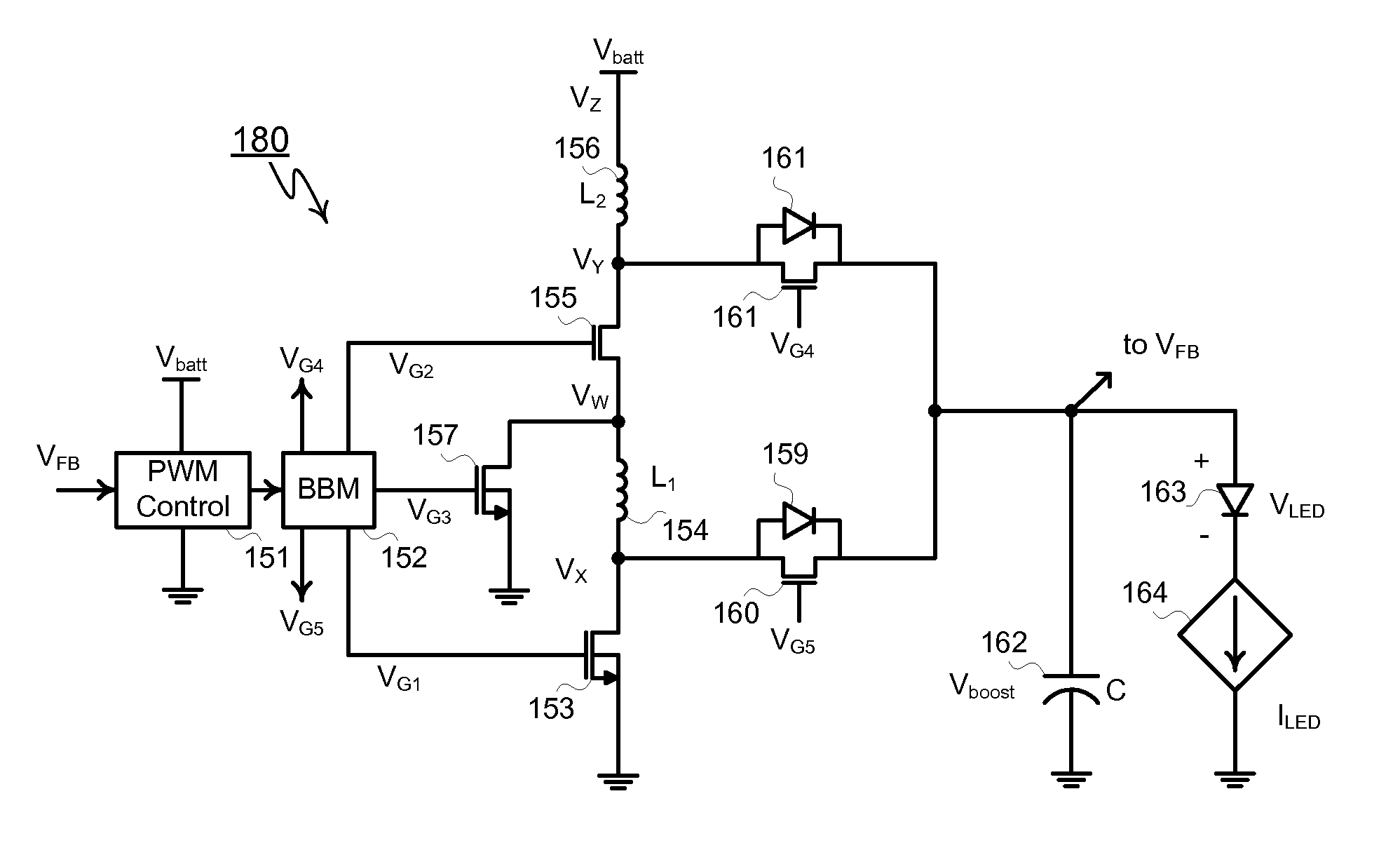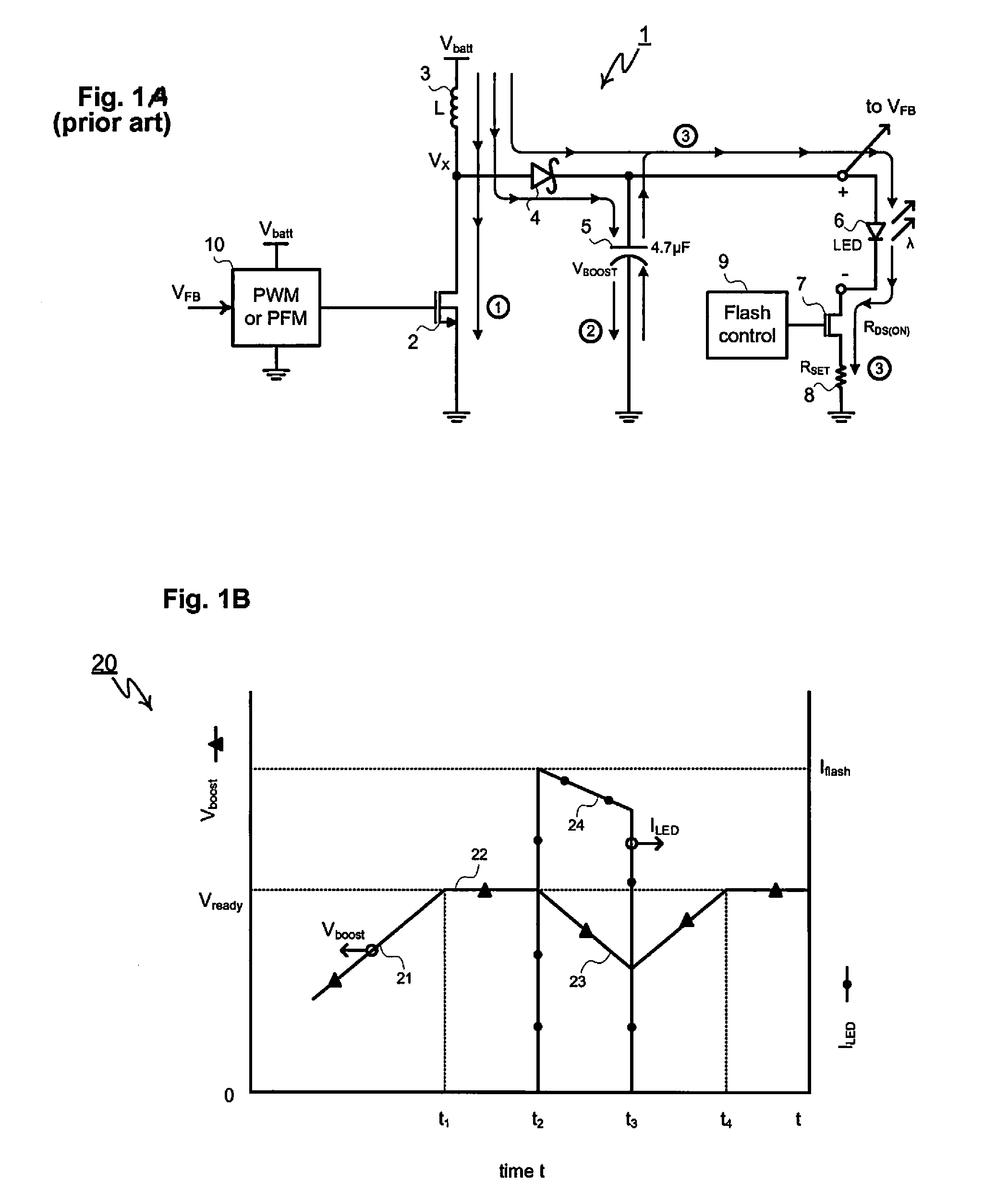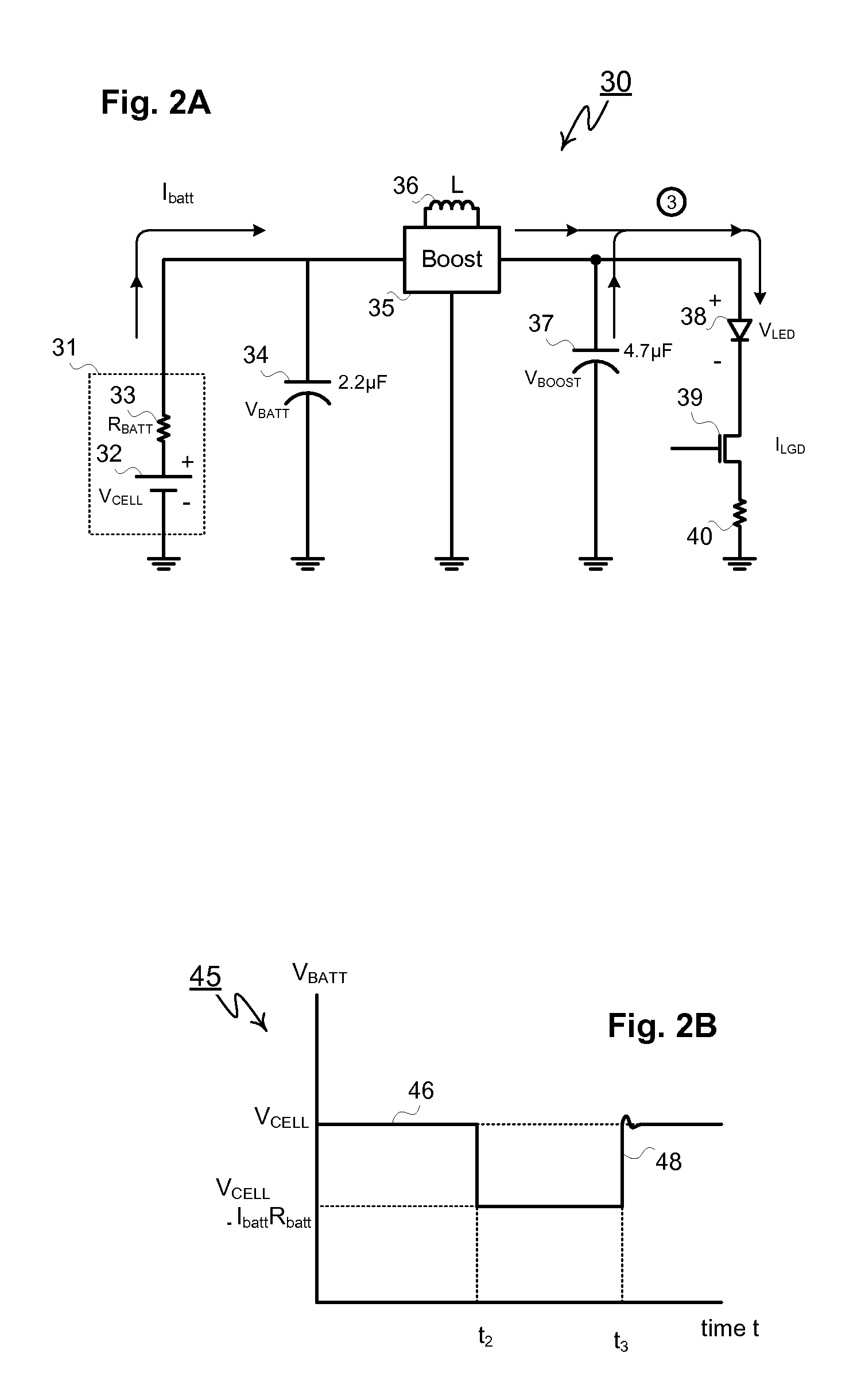High Current Switching Converter for LED Applications
- Summary
- Abstract
- Description
- Claims
- Application Information
AI Technical Summary
Benefits of technology
Problems solved by technology
Method used
Image
Examples
Embodiment Construction
[0064]As shown in FIG. 4, disclosed boost converter 70 comprises PWM controller, break-before-make gate buffer 71, power MOSFETs 73, 75 and 77, inductors 76 and 74, rectifier diodes 78 and 79, and output capacitor 80. Unlike conventional single inductor boost converters, inventive boost converter 70 made in accordance with the present invention comprises two inductors that during magnetizing are connected and series and draw a prescribed amount of current from the battery. When transferring their energy to the converter's output, both inductors are connected to a common node, i.e. the output, thereby delivering twice the input current to the output. In the example shown, the disclosed converter drives a high current load, in this case, flash LED, i.e. light emitting diode, 81. The current ILED in LED 81 is controlled by adjustable current source 81, ranging from zero to the maximum current supplied by boost converter 70.
[0065]Topologically boost converter 70 includes MOSFETs 73 and ...
PUM
 Login to View More
Login to View More Abstract
Description
Claims
Application Information
 Login to View More
Login to View More - R&D
- Intellectual Property
- Life Sciences
- Materials
- Tech Scout
- Unparalleled Data Quality
- Higher Quality Content
- 60% Fewer Hallucinations
Browse by: Latest US Patents, China's latest patents, Technical Efficacy Thesaurus, Application Domain, Technology Topic, Popular Technical Reports.
© 2025 PatSnap. All rights reserved.Legal|Privacy policy|Modern Slavery Act Transparency Statement|Sitemap|About US| Contact US: help@patsnap.com



